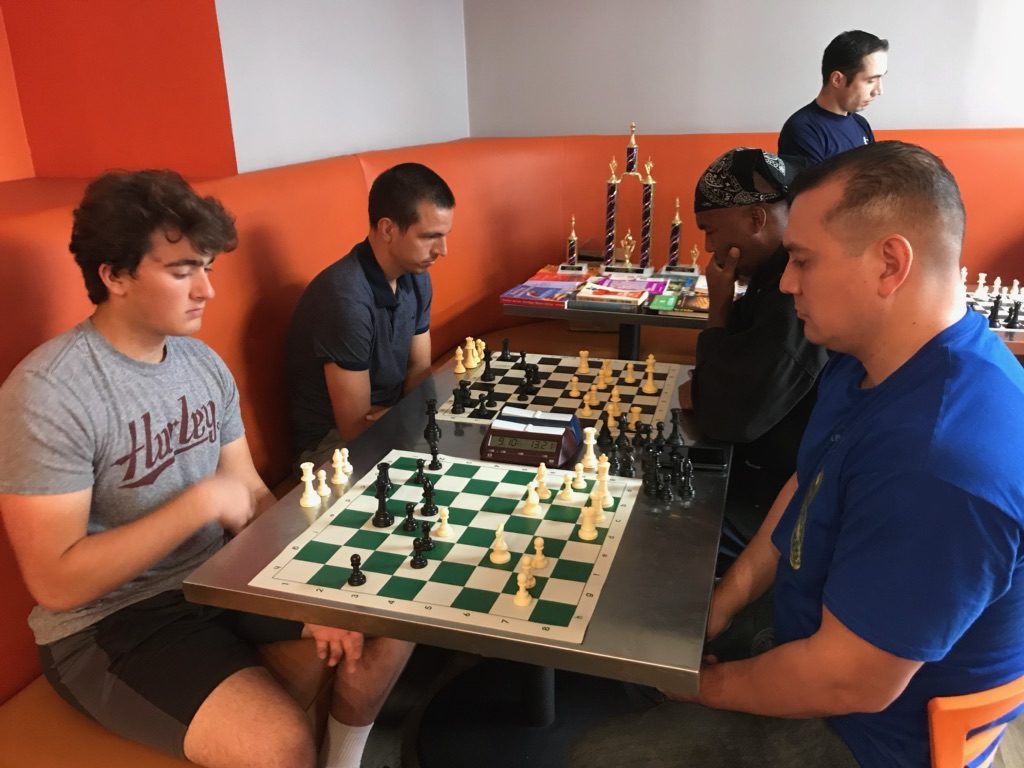Chess is one of the world’s greatest and most historic games. Few, if any, games have the depth of tactics and strategy that chess has. Learning to play chess can be done in an hour but you can easily spend a lifetime mastering this amazing game. Keep reading to learn to play chess.
Do you need to buy a chess set? Click Here!
Set-up
The first step in learning to play chess is setting up the board. The chessboard is oriented so that each player has a white square in the bottom right corner. Each player has a king, queen, 2 rooks, 2 knights, 2 bishops, & 8 pawns. Rooks go in the corners, knights next to them, then bishops, and finally the king and queen. The queen is always placed on her color and the king occupies the remaining square. The second row is filled with pawns. White always moves first, so randomly decide who plays as white. Players alternate making moves until the end of the game.

Goal
The goal in chess is to checkmate the opponent’s king. Checkmate is when a player’s king is in a position to be captured (Check) and cannot escape from capture. The first player to checkmate the opponent’s king is the winner.

How the pieces move
During each player’s turn, he/she must move a piece. A player cannot move a piece to a square already occupied by one of his/her own pieces. If a piece is moved to a square occupied by an opponent’s piece, the opponent’s piece is captured and removed from the board. Pieces cannot be moved through other pieces, although knights can jump over other pieces.
Rooks
A Rook can move any number of squares either forward, backward, or to the sides.
Bishops
Bishops can move any number of squares but only diagonally. Notice that bishops remain on the same square color the entire game. Therefore, it is customary to refer to a player’s light-squared bishop and dark-squared bishop.
Knights
Knights move two squares in one direction (forward, backward, or to the sides) followed by 1 square at a 90 degree angle. This is just like the shape of an L. Knights are the only pieces that can jump over other pieces.
Queen
The queen can move just like a rook or bishop. In other words, the queen can move any number of squares either horizontally, vertically, or diagonally.
King
The king can move one square in any direction (forward, backward, to the sides, or diagonally). The king can never move into check (where he could be captured).
Castling: Castling is a special king move that also involves a rook. To castle, move the king two squares to the left or right and then place the corresponding rook on the opposite side of the king. Castling can only be played when the king and rook have not moved yet, there are no pieces between the king and rook, and the king is not in check and does not pass through check in the process of castling. We often refer to kingside castling or queenside castling depending on which rook is used.
Pawns
Pawns move and capture differently. The first time a pawn is moved, it may move one or two squares forward. The pawn can only move one square forward in subsequent moves. Pawns capture diagonally one square forward.
Promotion: If a pawn reaches the opponents back row, the pawn is replaced by a queen, rook, knight, or bishop. The player may choose which piece the pawn becomes regardless of what pieces remain on the board. Usually, the pawn is promoted to a queen. In this way, it is possible for a player to control more than one queen.
En Passant: If a pawn moves two squares on its first move and winds up to the side of an opponent’s pawn, the opponent’s pawn may capture it as though the original pawn had moved only one square forward. This capture must be done immediately and not on a later turn.
Check & Checkmate
Understanding checks and checkmates is crucial when learning to play chess. If a piece moves to a square where it can capture the opponent’s king, that king is in check and the opponent must respond immediately to get the king out of check. This can be done by moving the king so it is not in check, blocking the check with another piece, or capturing the piece that is threatening the king. If the king cannot get out of check, we have checkmate, and the game is over.
Draw
Sometimes, a game ends in a draw. There are several ways that a game can be drawn:
1) Draw Offer: One player offers a draw during his/her turn and the other player accepts.
2) Insufficient material: Neither side has enough material to cause checkmate. Ex: king and bishop vs. King
3) Threefold repetition: If a position is repeated three times (not necessarily in a row), a player may claim a draw.
4) Stalemate: A position where a player is not in check and has no legal move.
5) 50 move rule: If 50 moves pass in which no pawn is moved and no capture is made, then a player may claim a draw.
6) Draw on time: Only occurs if using time control. If a player runs out of time, but the opponent does not have sufficient material to cause checkmate, it is a draw.
Congrats on learning to play chess! Wanna learn more by taking a chess lesson? Check out our Chess Lessons Page!




